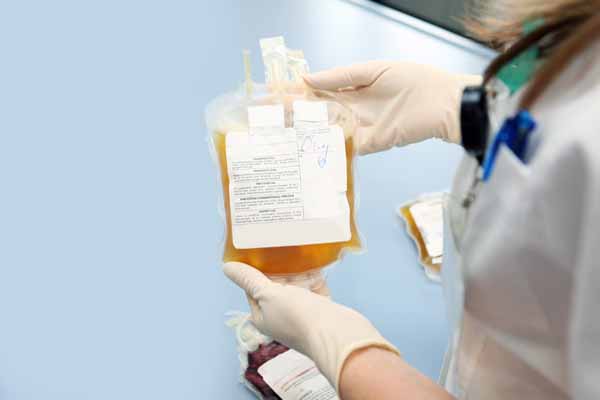
As demand for plasma for medicinal products continues to increase, some physicians caution that for-profit plasma centers may threaten an already fragile volunteer blood donation base.
An aging population in the U.S. simultaneously creates fewer eligible blood donors and an increased need for them. Bedford pathologist William Crews, MD, who chairs the Texas Medical Association’s Subcommittee on Transfusion Medicine and Transplantation, says blood centers have not been able to replace those donors at the needed rate.
“It's well known within community blood centers across the country that we're going to have to increase the number of younger blood donors,” said Dr. Crews, medical director of laboratory services for Carter Bloodcare in Dallas-Fort Worth.
But targeting that demographic has proven difficult, complicated by for-profit plasma centers, he says.
The number of such sites has been on the rise in recent years, to meet growing demand for both plasma and its derived medicinal products.
Where blood centers have a long-held tradition of non-remuneration, plasma centers “aggressively market” high compensation rates, Dr. Crews says.
"Community blood centers may give T-shirts, but we don’t tell every donor that they’re compensated every time they donate,” he said. “A donor may feel, ‘If I can get $500 or $700 a month by giving source plasma, I’m not really interested in donating for the community blood center who’s going to give me a T-shirt.’”
The physicians Texas Medicine spoke to could not say for sure whether compensation is drawing donors away from community blood centers, pointing to inconclusive research on the impact of altruistic versus monetary motivations in blood donation. TMA continues to support the U.S. Food and Drug Administration’s national blood policy, which calls for an all-volunteer blood supply managed by nonprofit blood banks.
What physicians can say with certainty is that any potential redirection of donors to paying plasma centers is likely to pull important transfusion supply out of communities and into the global market. An estimated 70% of plasma-derived medicinal products worldwide are collected in the U.S., almost a third of which goes to Europe – where the European Union has banned compensation for plasma donation.
By contrast, community blood centers provide services only regionally and, in cases of disaster, across state lines. Most blood donated to community centers goes to those in immediate need in local hospitals.
This doesn’t make blood donation more important than plasma donation, says Merlyn Sayers, MD, a pathologist in Bedford and consultant to TMA’s Subcommittee on Transfusion Medicine and Transplantation.
“We are not denying the importance of plasma-derived medicine,” said Dr. Sayers, president and CEO of Carter Bloodcare. “But we don't want to be satisfying the world's raw material needs for those products.”
Physicians fear voluntary blood donation and paid-plasma donation will continue to be at odds, as demand for both shows no sign of slowing.
“Both categories of patients, transfusion-dependent patients and plasma derivative-dependent patients, are groups that are increasing in number,” Dr. Sayers said, citing increasing off-label uses of immunoglobulin and the aging population as possible drivers.
Dr. Crews adds that, based on anecdotal findings, rates of paid plasma donation compared with voluntary blood donation are unlikely to change without policy intervention.
In the meantime, the subcommittee encourages all physicians to talk to their patients about the importance of donating blood.
“There is absolutely no substitute whatsoever for blood and platelets,” Dr. Sayers said. “I’ve asked physicians to do this: encourage their healthy patients [to donate blood]. If they’re not in good health, be blood donor recruits.”